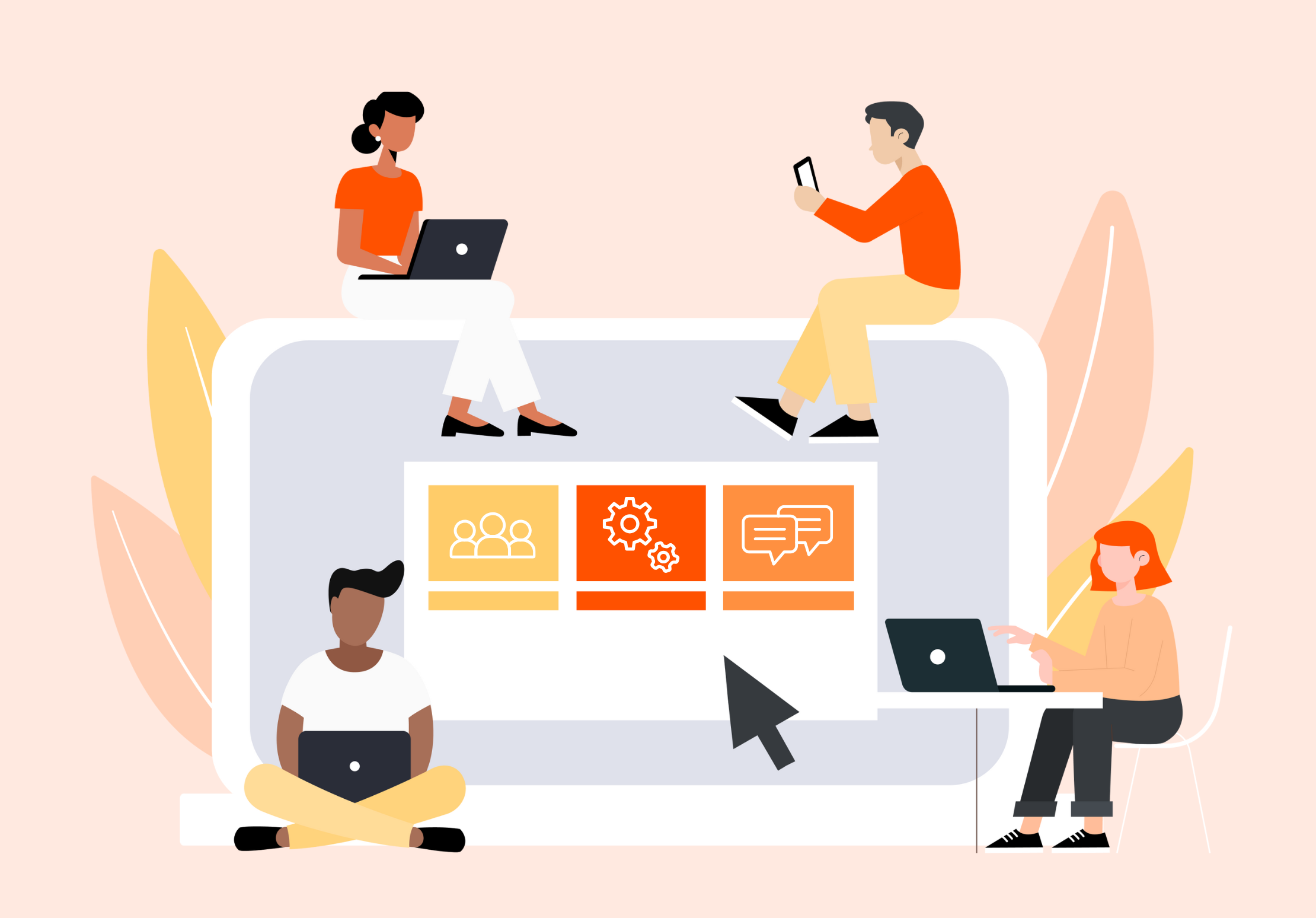7 May 2025
Develop the Social Aspect of Your Training!
In the age of social media explosion, what about the community experience when it comes to online learning? Here’s an article that covers everything!
Turn Your Training into Collective Learning Experiences
The strength of your team can make all the difference!
Did you know that 70% of skills are acquired on the job, while only 10% comes from formal training? (1) The reasoning is simple: we absorb knowledge better by interacting with peers and sharing experiences. Online learning offers many ways to foster this environment, known as “social learning.” Here are a few examples!
Highlight Challenges
The success of collaborative platforms proves this every day. When we encounter a problem, we search the internet for someone who has faced a similar situation, see how they solved it, and apply it independently. Leverage this principle in your training by focusing on the challenges your teams encounter and offering learners several solutions to choose from. The solution chosen by the field team is then presented with feedback.
Go into the Field
Another relevant tool to reinforce learning is to have learners progress on two fronts: online and at their workplace, in collaboration with their team. For example, you can choose a hybrid model where teams have the chance to meet in the field to practice their newly acquired skills and create an environment that fosters exchange.
Ask for Help from Colleagues
Social learning can easily be brought to life in an online world by creating mentors who are available to give cues as the training progresses so that learning is done from the experience of peers. The learner then analyzes the relevant information from these tips and applies it to their situation, just as they would in the field.
Collaborate
In the age of online gaming, collaboration is right at your fingertips for your training needs. Even if they’re thousands of kilometres apart, your teams can meet on a server to accomplish one or more missions together. Shared knowledge and advice promotes the development of collective intelligence.
Plant and Collect Clues
Difficulties should be seen as a valuable and sharable asset ! Applications like Geocaching, for example, encourage members to share difficulties in finding a marker by giving clues to make the experience easier for the rest of the community. Applied to your training, this concept translates into options for sharing experiences, whether in a forum, directly in the modules, or in any other form you can invent!
Social learning not only offers a better environment for your learners, but it also gives you a fantastic opportunity to receive relevant real-time feedback. Your training teams can then update and enhance the content to further improve the customer experience—something we prioritize here at pardeux®.
(1) Model 70/20/10 – Wikipédia



